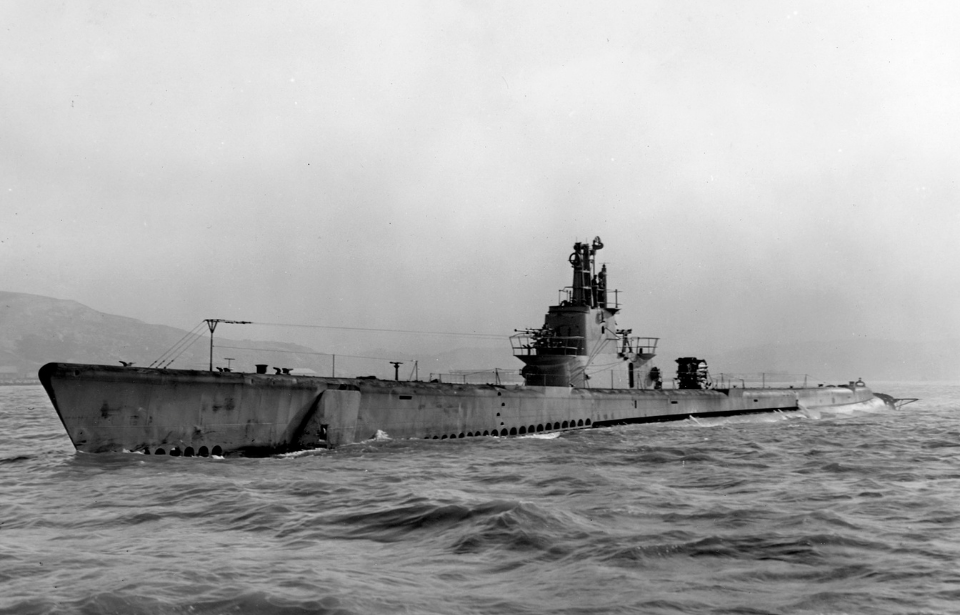The USS Barb (SS-220) was a US Navy submarine that became highly decorated after successfully sinking 96,628 tons of enemy shipping during her service in World War II. Led by Lt. Cmdr. Eugene B. “Lucky” Fluckey, the submersible accomplished record-breaking attacks that earned her four Presidential Unit Citations, a Navy Unit Commendation and eight battle stars.
The USS Barb (SS-220) enters the European Theater
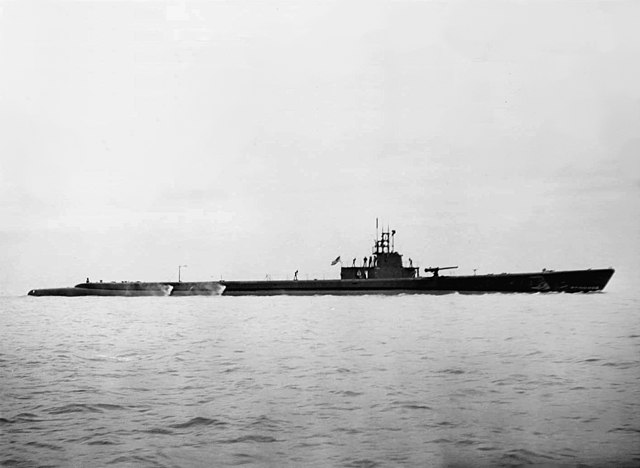
The USS Barb was laid down on June 7, 1941 in Groton, Connecticut, and she was launched and commissioned a year later. A Gato-class submarine, she was the first US Navy vessel to be named for the Barbus fish.
Barb carried out her first five patrols in the European Theater, conducting reconnaissance duties during the Allied invasion of North Africa and sailing against Axis blockade runners along the European coast. Following the termination of her fifth patrol, she was ordered by Naval Operations Adm. Ernest J. King to join the Pacific Fleet and undergo modifications.
Service in the Pacific Theater
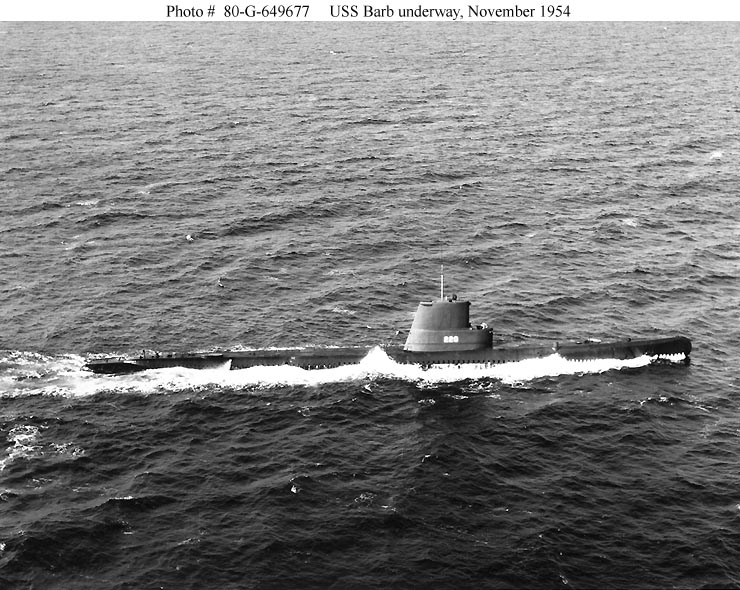
The USS Barb‘s second tour of duty in the Pacific saw a lot more action. In the spring of 1944, she cut freighter Fukusei Maru in half with three torpedoes, sank five ships and two sampans patroling the waters along the Kuril Islands, and took out the cargo ships Koto Maru and Madras Maru.
That summer was even more successful. During this time, the submarine sank two trawlers, the Japanese ship Toten Maru and the freighter Chihaya Maru all in the same day, followed by a passenger cargo ship two days later. Overall, she was credited with sinking 15,472 tons of enemy ships during this patrol.
Barb then joined organized group attacks with the 9th Patrol, including the USS Queenfish (SS-393) and Tunny (SS-282), and patroled the Manila/Hong King sea lanes. In this effort, she was successful in sinking many more Japanese vessels.
In the fall of 1944, Barb was requested to help in the rescue of Allied prisoners of war (POWs) onboard a sunken Japanese transport. On the way, she and Queenfish encountered a heavy enemy convoy. Barb deployed six torpedoes, sinking both the 11,700-ton tanker Azuna and the 20,000-ton escort carrier Un’yō. Both successfully reached their designated rescue location, where Barb pulled aboard 14 British and Australian prisoners.
Making history off the shore of Japan
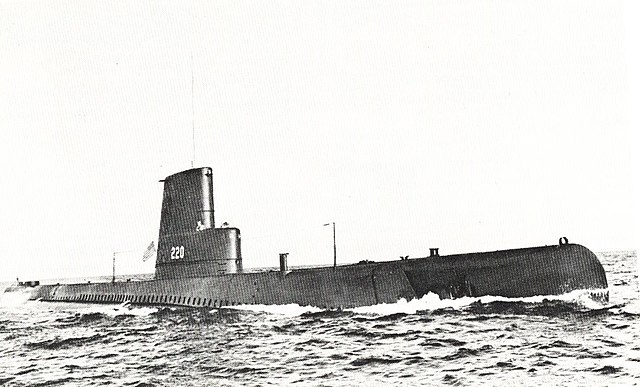
The USS Barb continued to make history as she conducted her patrols. However, it was in June 1945, while on her 12th patrol, that she became the first submarine to launch an assault against Japanese shore installations.
After reaching the area north of Hokkaido, Japan and east of the Karafuto Prefecture, she immediately used close gunfire to sink two Japanese luggers. Following this, she positioned herself approximately three miles from the center of the town of Shari. Her crew then launched their attack, and a few weeks later repeated the process against two other shore settlements.
The USS Barb (SS-220) ‘sunk’ a train
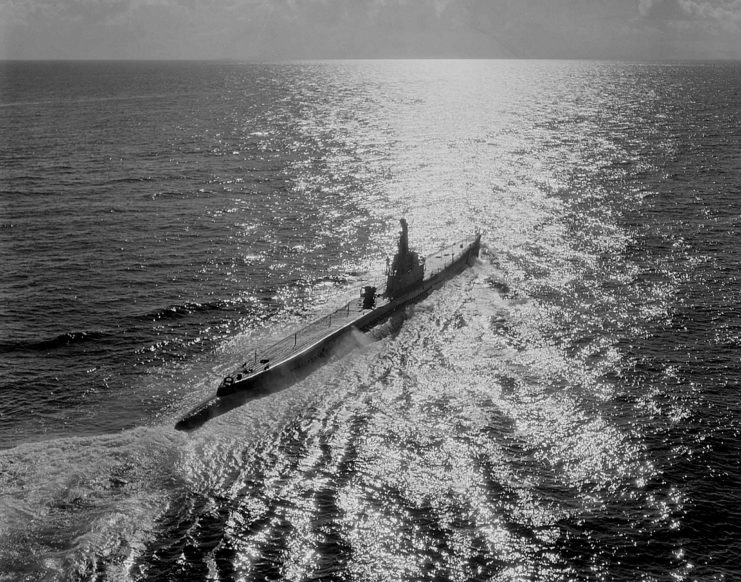
On July 19, 1945, the crew onboard the USS Barb spotted a railroad close to the Japanese coastline. This prompted them to halt their harassment of Japanese shipping and shore operations and, instead, lay low as they observed the tracks to determine train schedules.
During this time, the crew prepared their equipment and waited to strike.
On the night of July 23, Barb moved close to the shoreline. Dropping down small boats, eight of her crew members paddled toward the beach, and after 25 minutes became the first American combatants to set foot on one of Japan’s Home Islands.
Passing through high grass, a highway and a ditch, the crew arrived at the tracks. Once they’d established their position had gone unnoticed, they began to quietly dig and bury explosives and batteries beneath the soil. When the final connection was made, it was just a matter of time until the next train traveled across the tracks, triggering an explosion.
Ninety minutes after they left, the crew signaled back to Barb that they were returning, and, 15 minutes after climbing back into their small boats and pushing off the shore, a train came thundering toward the explosive setup. At 1:47 AM, a 16-car train hit the detonator. From the safety of the submarine, the crew watched as it piled up and “sank” on Japanese soil.
Post-war service with the Italian Navy
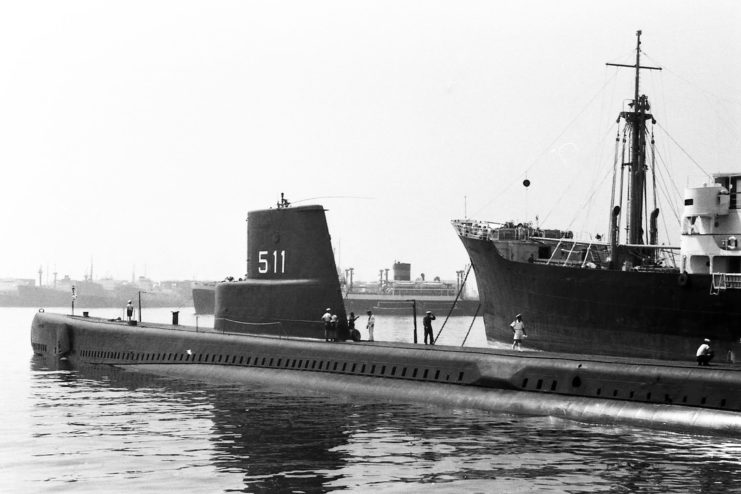
Returning to the United States after WWII, the USS Barb was placed in and out of commission multiple times, including with the Atlantic Fleet. Following her decommissioning in February 1954, she underwent Greater Underwater Propulsion Power Program (GUPPY) conversion, after which she rejoined the Atlantic Fleet.
In December of that year, the submarine was ultimately decommissioned and loaned out to Italy under the Mutual Defense Assistance Act.
More from us: The US Navy’s First Escort Carrier Shined During the Guadalcanal Campaign
Under service with the Italian Navy, the vessel was renamed Enrico Tazzoli (S 511), and was eventually sold for scrap in 1972 for approximately $100,000 USD. Adm. Fluckey remarked that he wished he’d known about her scrapping, as he and his crew would have bought the vessel, returned it to the US and kept it as a museum submarine.
